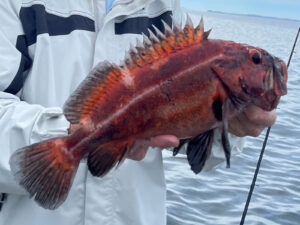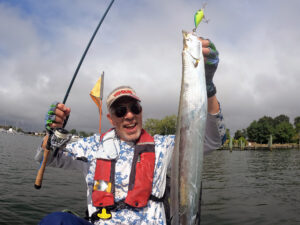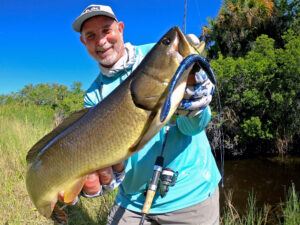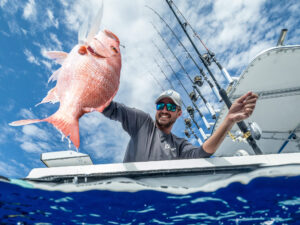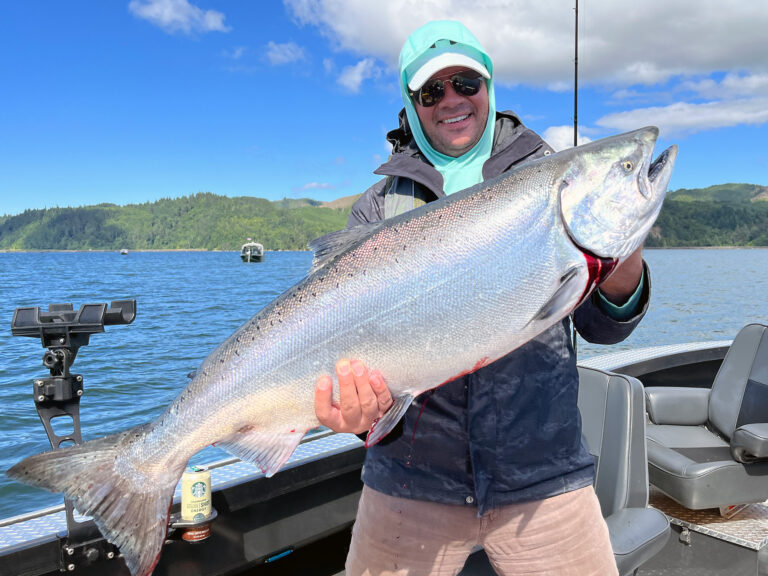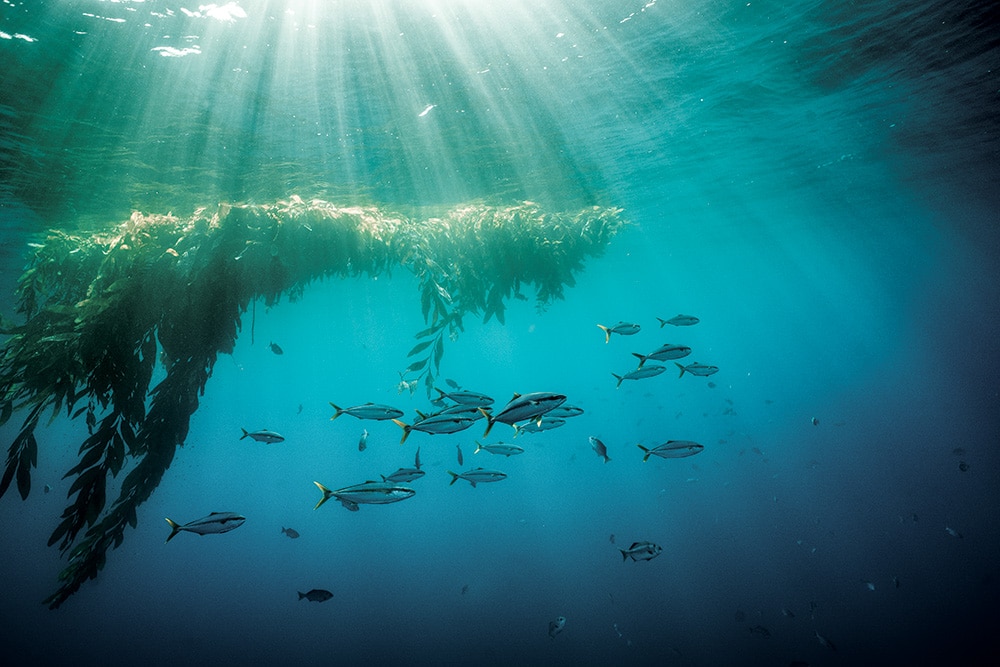
On a summer morning when the blue, glassy waters 10 miles off Port St. Lucie, Florida, appeared devoid of life, a distant patch of golden-brown sargassum loomed enticingly on the horizon. “Get ready,” said David Glenn, of Pursuit Boats, as he spied the target and put the Pursuit DC 325 on a course to troll by the mattress-size patch of weed. No sooner had the boat swept by than a pack of mahi raced out from below to attack the trolling lures. Two trolling rods bent over hard as the clickers announced a double hookup.
This kind of scene plays out many times over in tropical, subtropical and even temperate oceans around the world. It’s no secret. Anywhere such patches float offshore, you’ll often find schools of mahimahi and sometimes blue marlin, striped marlin, sailfish, sharks, tuna, wahoo and other pelagic species.
Anglers might call them weeds, but these are actually species of marine algae, with different types producing different game fish, depending on where you’re fishing. In the Atlantic Ocean, Gulf of Mexico and Caribbean, the main species are Sargassum natans and Sargassum fluitans, both of which are holopelagic, which means they grow free-floating in the ocean and never attach to the seafloor during their life cycles.
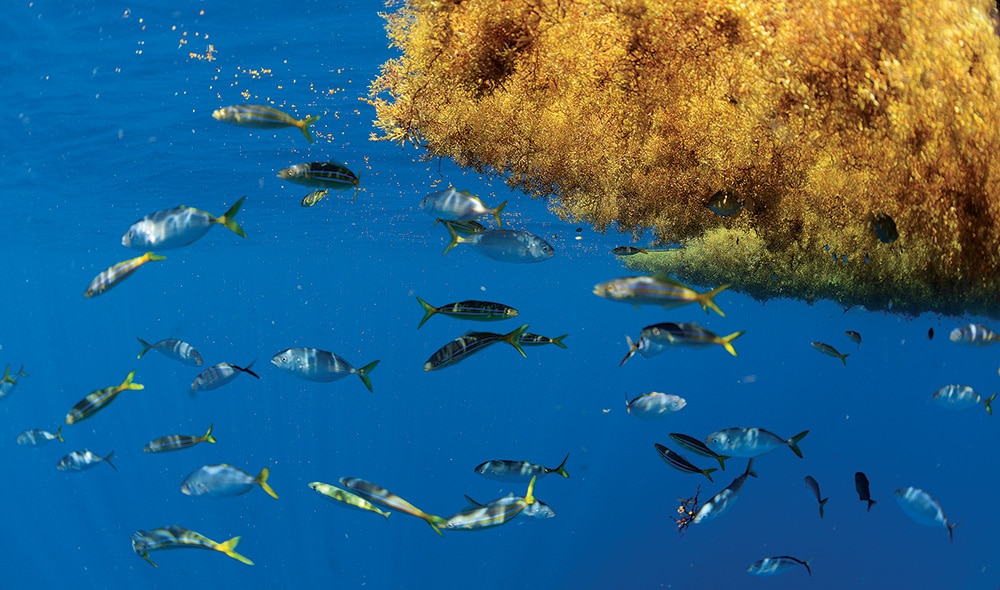
In the Pacific, off Southern California and Baja California, Mexico, anglers target patches of giant kelp (Macrocystis pyrifera) called paddies that have broken free from relatively shallow kelp beds and drifted offshore. In the Sea of Cortez, floating weeds are often sargassum, but not the holopelagic type found on the East Coast. At least six species grow on tidal rocks in this region. The weeds break free during storms and seasonally slough away to drift offshore, where they form weed patches and lines.
That’s not to say that weeds are the only form of structure under which offshore life collects. Debris such as logs, palm fronds, wooden pallets, ladders and even the floating carcasses of cetaceans and pinnipeds can attract a chain of marine life. Yet the most abundant flotsam are the mats of golden-brown weeds, and that makes them the most consistent producers for offshore anglers. Let’s look at the science behind this.
What’s the Attraction to Weeds?
Avid offshore anglers know almost instinctively that weeds can hold fish, but they might not know exactly what actually attracts fish to these spots. Like a McDonald’s in the middle of the Sahara Desert, patches of floating algae offer pelagic fish two basic elements of survival: shelter and food.
“Many things grow on and around sargassum,” says Hazel Oxenford, professor of marine ecology and fisheries at the University of the West Indies at Cave Hill, Barbados. This includes hydroids and small crustaceans such as crabs and shrimp, as well as zooplankton and the fry of pelagic fish. All of these organisms in turn feed small jacks and other species, such as filefish, flying fish and triggerfish, she adds. Small fish find not only forage but also a place to hide in and under the weeds from predators such as mahimahi, tuna, billfish, sharks and wahoo.
Much of the sargassum in the Gulf of Mexico and along the Eastern Seaboard originates in the ever-shifting and borderless Sargasso Sea, an aggregation of sargassum spanning approximately 1.4 million square miles in the middle of the North Atlantic Ocean. This massive marine canopy is often likened to an upside-down rainforest. Sections of the forest are spun away and carried west by the Antilles Current on the southern edge of the sea, merging with the Gulf Stream, which carries the weeds north. Some of the sargassum rejoins the Sargasso Sea as the Gulf Stream turns east in the upper latitudes.
Mahi Attracted to Sargassum
In a National Oceanic and Atmospheric Administration study off North Carolina, 81 fish species were documented using sargassum for shelter and food. “Most of these fishes are juveniles and occur within Gulf Stream waters,” the report states. Predatory fish include amberjack and tuna. Yet, no offshore game fish is more closely associated with floating weed than mahimahi (aka dolphinfish).
Healthy mahi populations and sargassum are closely aligned, says Don Hammond, former director of Dolphinfish Research Program, based in Charleston, South Carolina. “Our research indicates that dolphinfish prefer to spawn around sargassum,” Hammond reveals. “The young are genetically programed to seek shadows for protection.” Sargassum grants the young mahi plenty of shade.
Data collected by the program indicates 60 to 70 percent of mahi that are caught are taken around sargassum along the East Coast, he says.
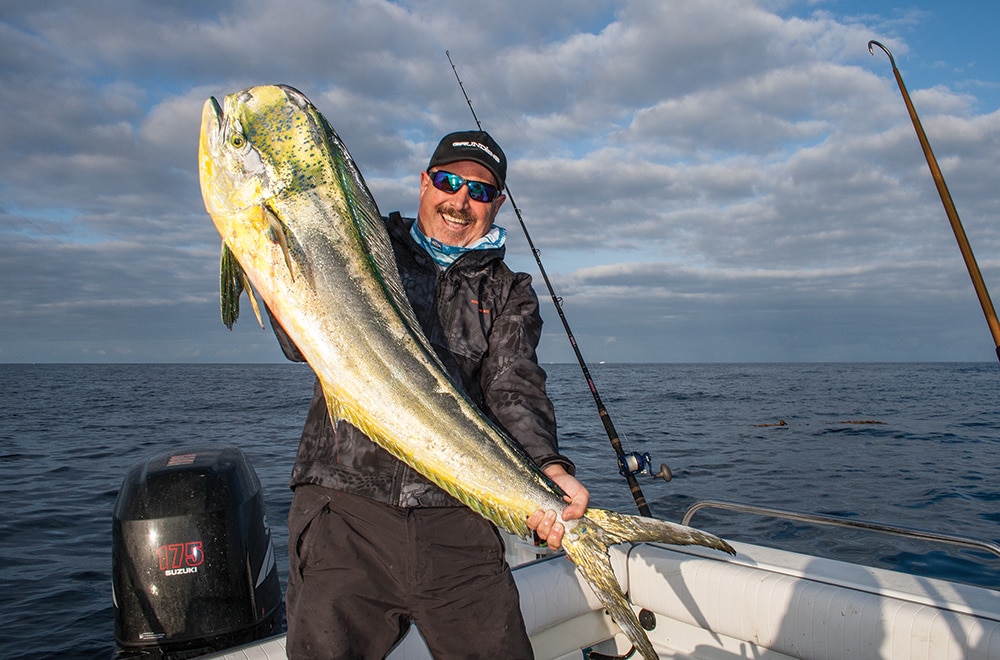
“Dolphin[fish] can grow to 40 pounds in 12 months,” Hammond points out. It takes a tremendous amount of food to fuel such fast growth, and mahi find much of their fodder under and around the weeds. “Inspections of stomach contents have revealed everything from ballyhoo, flying fish and small jacks to shrimp, squid, filefish and seahorses,” he reports.
Mahi, in turn, become forage for even larger game species, such as blue marlin, big tuna and sharks. “That’s another reason dolphinfish hang around sargassum,” says Hammond. The weeds give even mature mahi a place to hide.
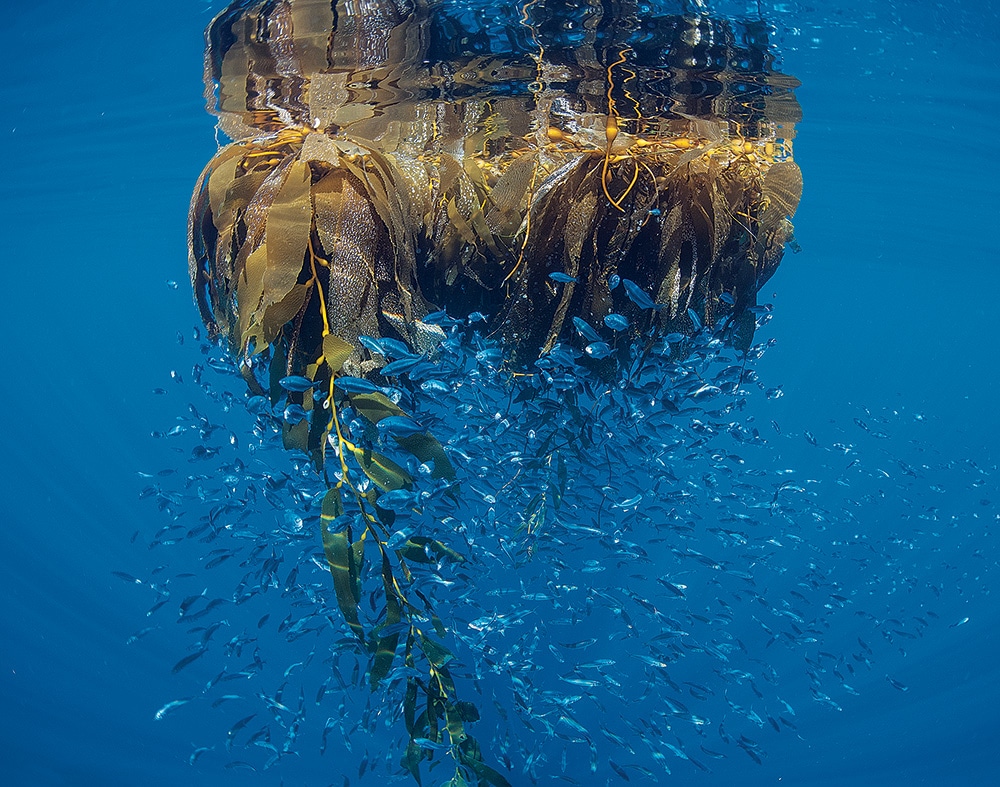
Interestingly, holopelagic sargassum depends on fish as much as fish depend on it, says Oxenford. “Sargassum relies on the feces of its inhabitants for nutrients,” she says. The more fish, the greater amount of nutrients generated and the faster the sargassum grows.
Finding Kelp Paddies Offshore
Schools of warm-water game fish such as mahi, striped marlin, yellowfin tuna and California yellowtail often migrate northward along the Pacific coast of Baja and Southern California in summer. In El Niño years, anglers might also get a shot at wahoo or blue marlin.
This is when anglers seek out offshore kelp paddies in earnest. Sometimes, you can observe the offshore food chain by peering below a kelp paddy. Small baitfish, such as anchovies and small sardines, hover just below, while larger Pacific chub mackerel and jack mackerel school slightly deeper. If you’re fortunate, you’ll catch a glimpse of larger game fish.
Yet, as with patches of sargassum, not all offshore kelp paddies hold game fish. Like that McDonald’s I mentioned earlier, but with no customers, some are devoid of large predators at any given time. While little or no scientific research exists on what makes one floating kelp patch better than the other for attracting fish, anglers rank paddies on a number of factors. The larger the patch, for example, the more likely it is to hold fish, many anglers believe. Paddies as large as a garage door are particularly prized hot spots, though on some days, a paddy the size of a trash-can lid might also produce fish.
Paddies with stalks that drape well below the floating kelp are also more likely to hold fish, veteran anglers have discovered. It is not clearly understood if the low-hanging kelp enhances the paddy’s fish-aggregating qualities, says Chugey A. Sepulveda, director and senior scientist for Pfleger Institute of Environmental Research in Oceanside, California.
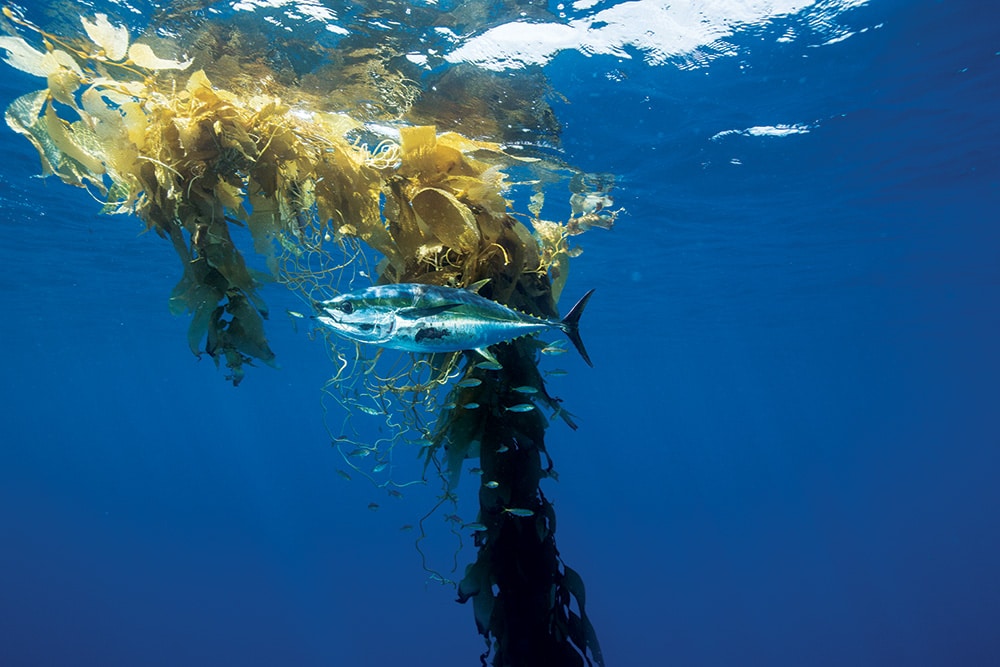
“Anything hanging in the water is helpful [in attracting fish],” says Sepulveda, who qualifies his comments as conjecture and not based on any scientific data. Hanging kelp stalks also tend to slow the paddy’s drift, and that can help it stay in productive zones longer, he opines.
Age is also a factor because a paddy needs time to gather a community of offshore residents. It’s impossible to determine age, and recruitment times vary, Sepulveda points out, but schools of bait species, such as anchovies, chub mackerel and jack mackerel, under the paddy indicate that it’s mature enough to attract game fish. “If there’s no bait, you’ll rarely find predators,” he has observed.
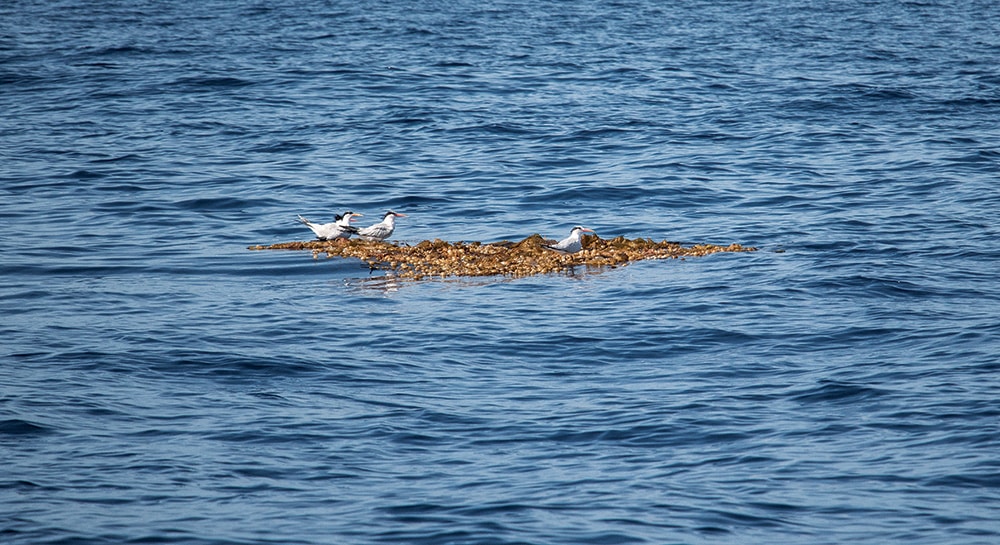
The location of a paddy plays into this as well. One found in off-color water close to shore isn’t likely to hold fish, but one that drifts in purple-blue water well offshore is a prime candidate. Paddies found along offshore current breaks possess great potential for attracting game fish.
Fishing Near Sargassum
In the waters off Miami Beach, Florida, the best pieces of offshore sargassum are those concentrated into relatively large patches, says Capt. Jimbo Thomas, whose 42-foot Post, Thomas Flyer, is a top-producing charter boat in the region. “When the weeds are scattered, so are the fish,” he points out. “Weeds that are bunched up are best. I like patches and weed lines that are 20 feet wide or more.”
Thomas also says the longer the weed has drifted in the Gulf Stream, the more likely it is to produce fish. He uses his fish finder to see if there are telltale bait schools underneath. Like Sepulveda, Thomas believes that lack of bait is a bad sign. “If there’s no bait under the weed, chances are there are no larger fish either,” he says. Conversely, the presence of bait bodes well.
If he sees a bait school, Thomas likes to drop a sabiki rig and catch a few to identify the species and add the prevailing forage to the livewell. “We often catch small rainbow runners and blue runners,” Thomas says. “Just about everything eats a 2-inch blue runner.”
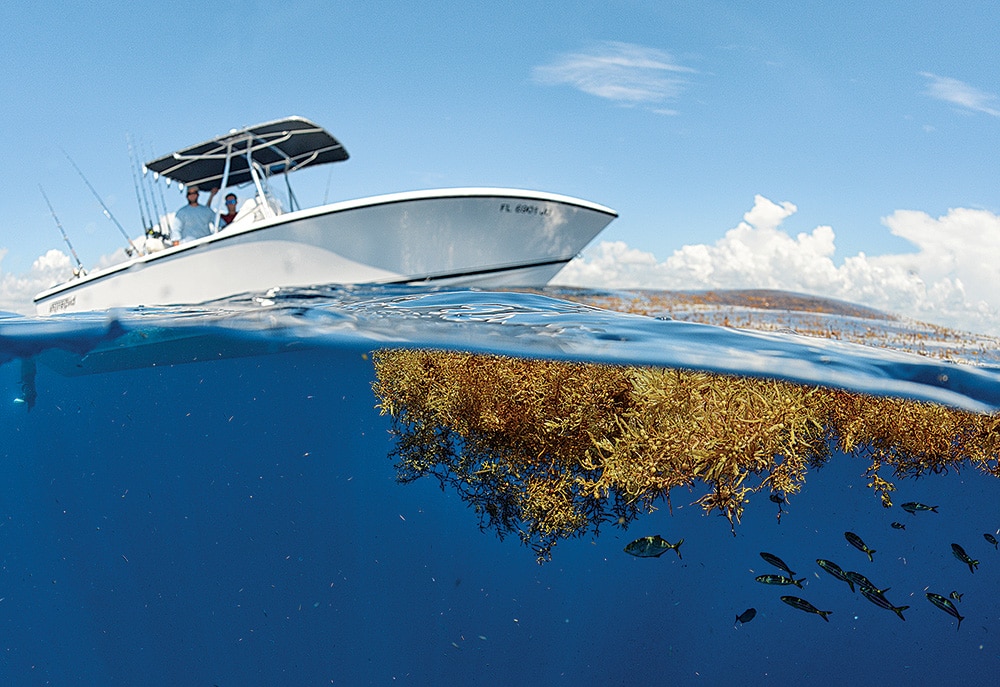
Bird activity serves as the most reliable indicator that a patch of weed holds fish, the captain points out. “Frigates and terns are the best indicator birds,” he says. “Terns will be right on top of the fish, while frigates hover higher, waiting to swoop down on a flying fish that pops up.”
The same holds true on the West Coast, but frigates don’t reach as far north as Southern California. Terns, shearwaters and jaegers are prime indicator birds in this Pacific region. Flocks of terns fluttering low around a paddy serve as a sure sign of mahi or other predatory fish. A circling jaeger also means apex predators are feeding below. Small groups of shearwaters sometimes sit on the water over a deep school of yellowfin tuna, waiting for the fish to push bait toward the surface, so don’t discount these birds, even though they might not be actively feeding.
How Fish Act Around Different Types of Weed Patches
Different game species relate differently to these havens. On kelp paddies, for example, California yellowtail are frequently found just under the weeds, using the shade to hide in ambush. If a bait appears within striking distance, they will rush out and attack. Schools of mahi, on the other hand, tend to swim in a wider pattern around a paddy, and seldom hover for much time directly below the weeds. Yellowfin tuna are often found far below the paddy, as deep as 200 feet or more.
Hence, it is not necessary to fish right next to a kelp paddy. Letting the breeze blow your boat away from the paddy while drifting live baits, such as sardines or mackerel, at different depths and chumming with chunks of bait can often be more effective. Even schools of yellowtail will venture away from the shade of a kelp paddy to follow a chum line. Slow-trolling live baits in a wide circle around a kelp paddy can also prove effective, particularly for mahimahi and yellowfin tuna.
With weed lines in the Atlantic waters off South Florida, the choice many times boils down to which side of the weeds to fish, says Thomas. Weed lines form along the edges of currents, which run north, and there’s often a clean, blue side and a dirty, off-color side, Thomas reveals. “We like to troll south along the clean side,” he says.
Thomas trolls two small feathers, keeping them close to the boat to minimize fouled lures from loose weeds, while he scans for schools of mahi from the tower. If he spots fish or they get a hookup, he then drift-fishes with live bait.
Finding Weeds
Some days, weeds can be difficult for boating anglers to spot, particularly when large patches are scarce and an overcast sky or glare reduces color contrast. Choppy seas complicate the search. On any day, elevation helps — a big reason many fishing boats are equipped with towers.
Slowing the boat speed can also help, giving your eyes more time to scan the surface. Many anglers troll lures and/or rigged baits at about 7 knots while on the hunt. Captains encourage all crew members to stay on the lookout — the more eyes the better.
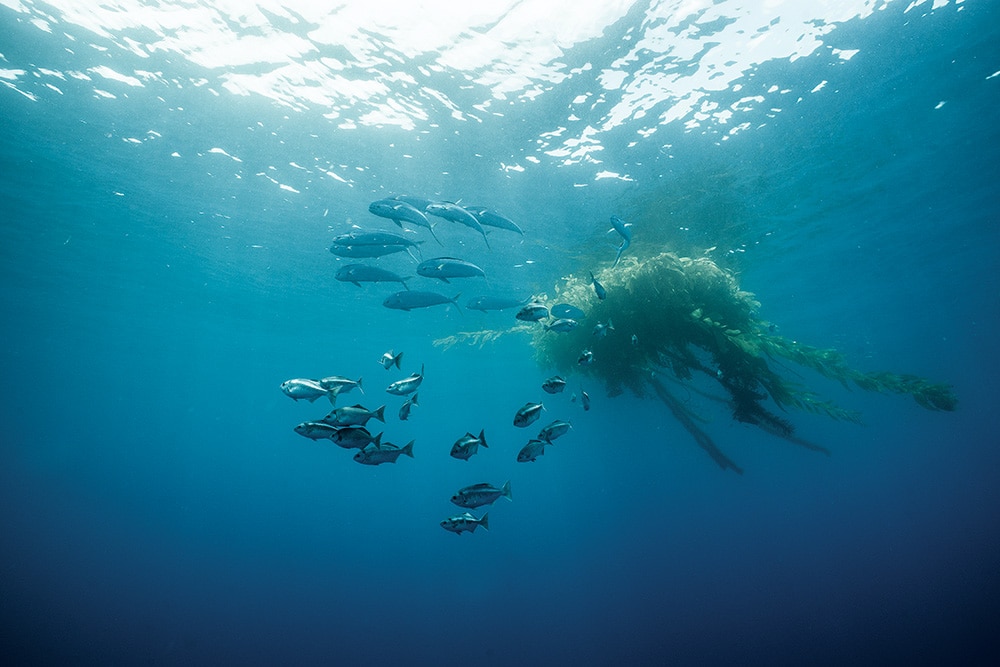
A set of quality binoculars, such as the Steiner Marine 7×50 (about $300), helps in spotting weeds at a distance. In California, many boating anglers have turned to gyroscopically stabilized binoculars, such as the Fraser Optics 14×40 Stedi-Eye Mariner-S (about $5,100). Other anglers opt for the more affordable Fujinon 14×40 TS1440 Techno-Stabi stabilized binoculars (about $1,300).
Once you find some weeds, a stealthy approach can pay dividends, says Capt. Barry Brightenburg, of San Diego, California. “I like to first slow-troll a couple of live baits in a wide circle around the paddy,” Brightenburg explains. “I slowly spiral inward toward the kelp on the second or third circle.”
By taking it slow rather than rushing in at a relatively high throttle setting, the boat tends to blend with the environment and is less likely to spook any fish, he contends. Brightenburg likes to shut down on the lee or down-current side of the weeds and then drift away, with live baits placed fairly far behind the boat, while chumming with liveys and chunks. “If there’s mahi or tuna under the paddy, sometimes they will swim to the boat and stay with it as if it were a paddy itself,” he adds.
Feeding Style
Some days, fish under a weed patch get finicky and refuse to bite most lures or baits. “Often, mahi get keyed in on small baitfish like 1-inch minnows under the weeds,” Thomas says. “They get their minds set on one thing and ignore everything else.”
One reason mahi and even tuna might settle in on these baits is because such forage is easy to digest, Sepulveda ventures to guess. “I have dissected mahi stomachs full of minnow slurry,” he reveals.
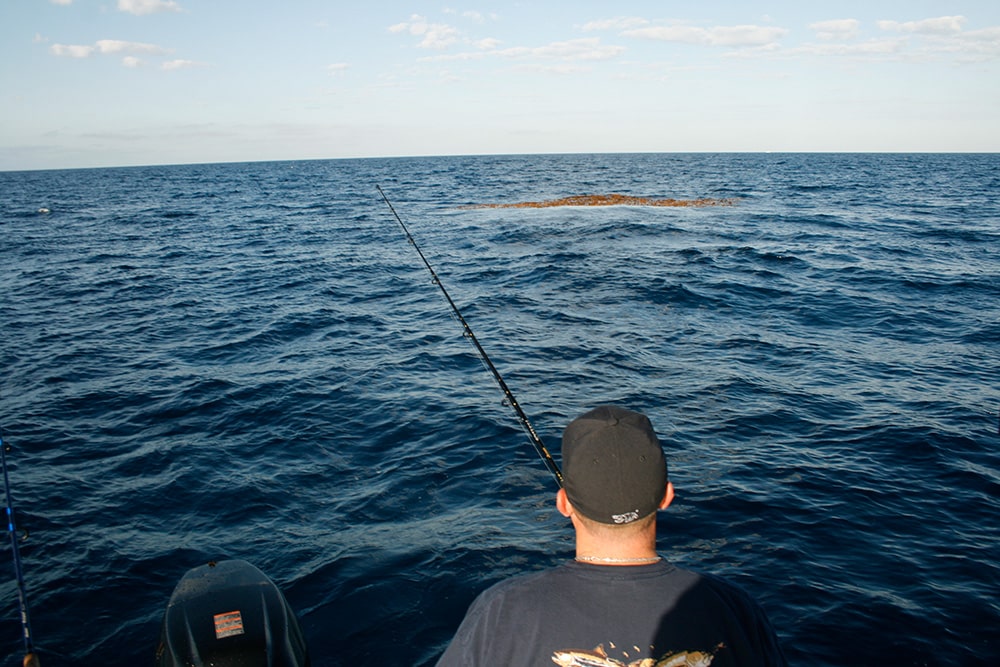
When small baits are abundant, mahi and tuna can gorge themselves to obtain calories almost instantly, as opposed to larger baits that require more time and energy to digest, Sepulveda conjectures. Also, when forage abounds and the fish are full, they are less likely to eat.
Though fly-fishermen might be able to match the hatch with 1-inch minnow replicas, other anglers motor away in frustration. Yet it’s worthwhile to circle back on these weed patches later in the day.
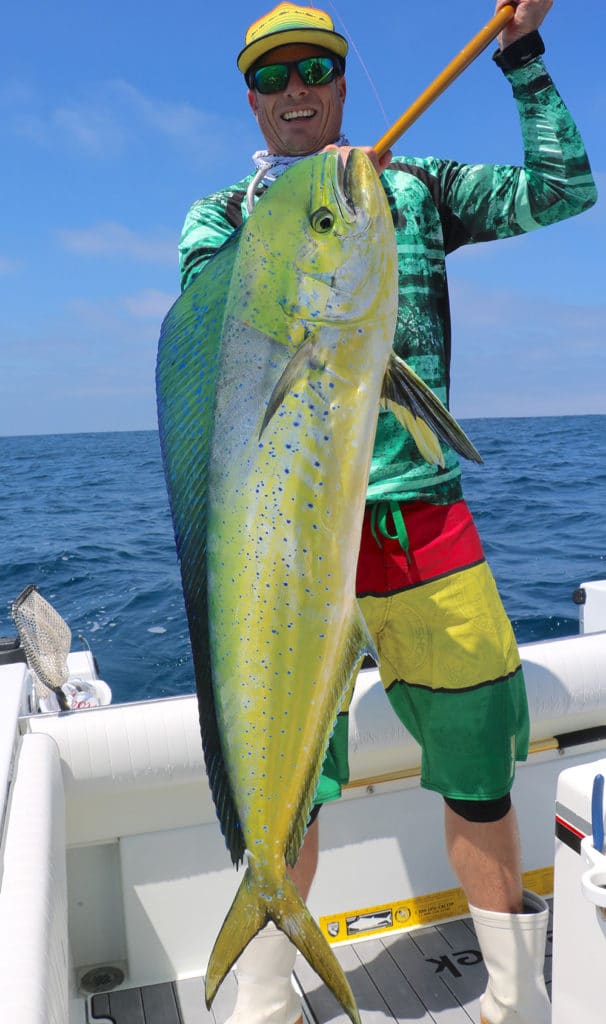
Off Southern California, for example, mahi often ramp up feeding at different times of the day. “They will go from nothing to wide open in an instant,” Sepulveda observes. It’s what SoCal anglers call a “time-of-day thing.”
Whether the golden-brown algae is kelp or sargassum, paddies, patches and lines of floating weeds rank among the most consistently productive offshore hot spots. Understanding more about the biology of this natural flotsam can make you a more successful angler.
Find Your Own Weeds
Moving in on another boat that has already found a productive weed patch is, to put it mildly, frowned upon by serious anglers. So-called poaching not only creates frustration among the crew that worked hard to find its own patch of weeds, but it can also result in ugly confrontations between the two boats. It also makes the offending skipper look like a hack. Better to hunt up your own patch than poach one and lose all respect.

